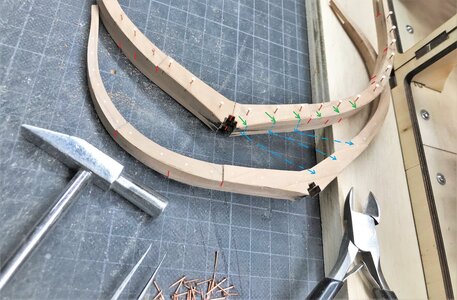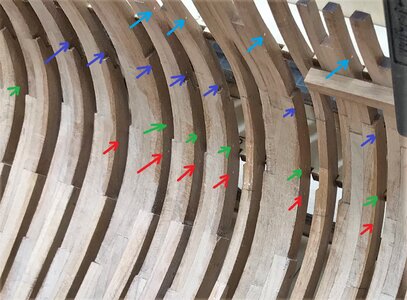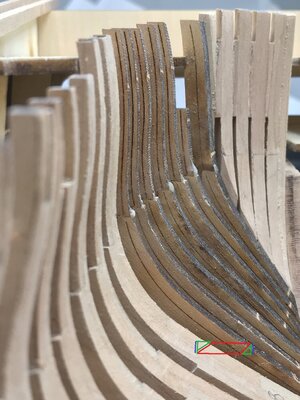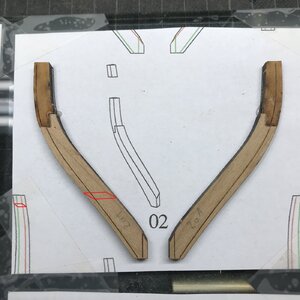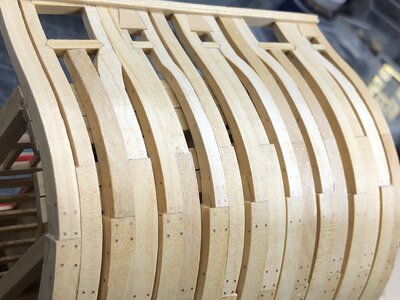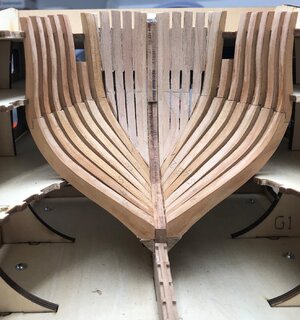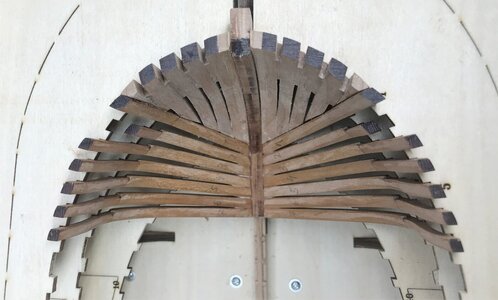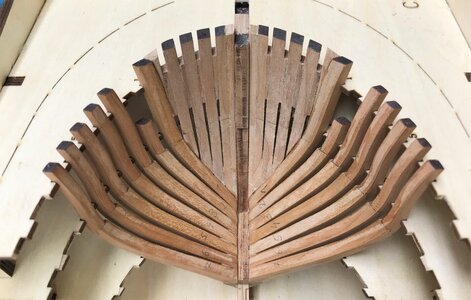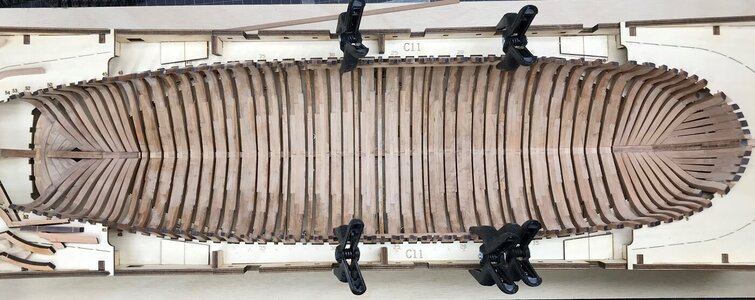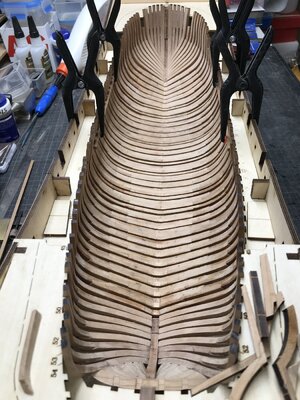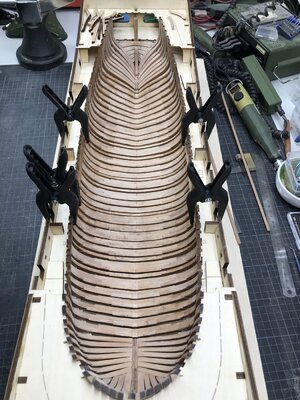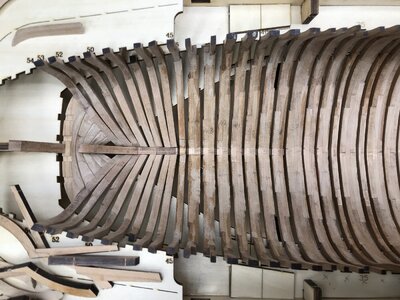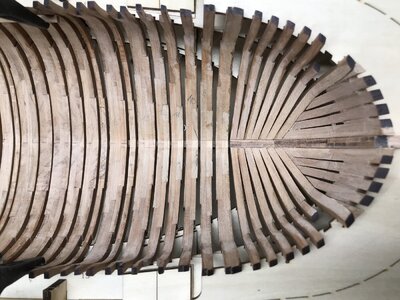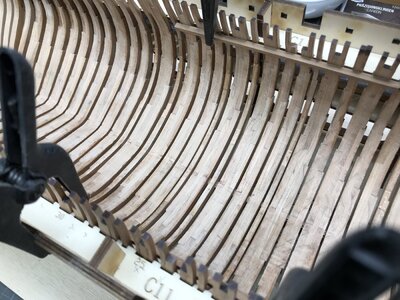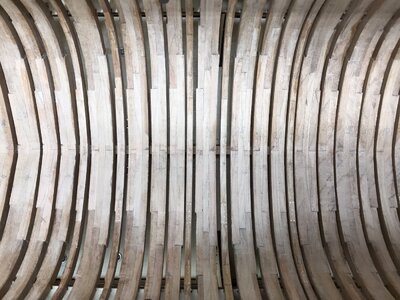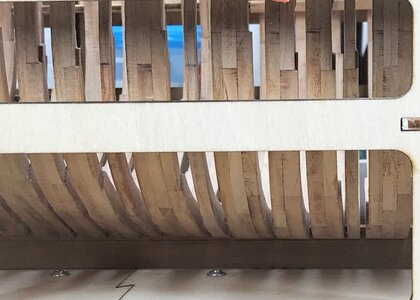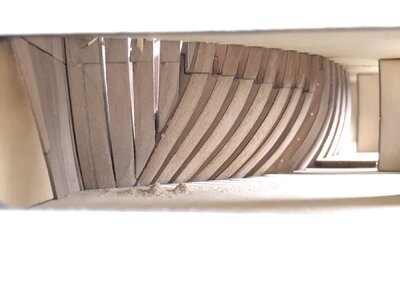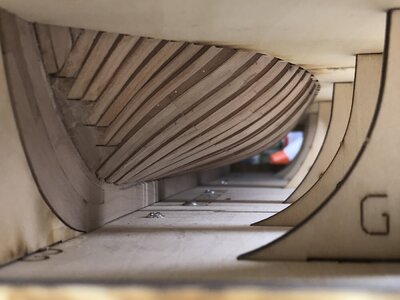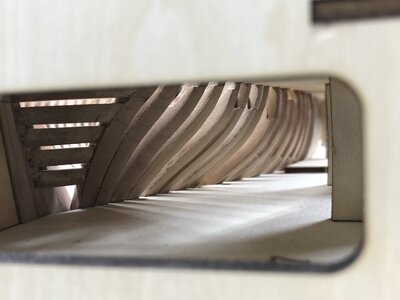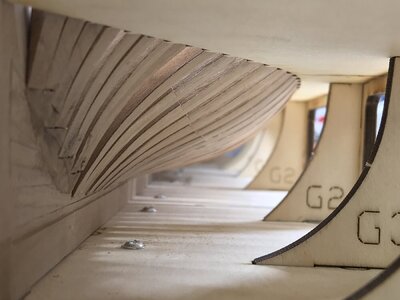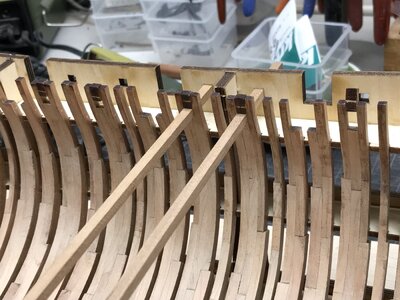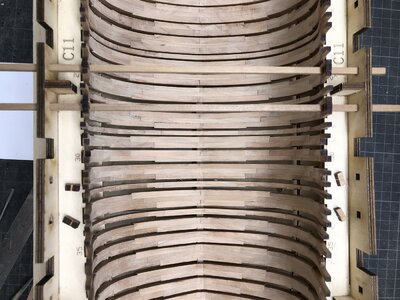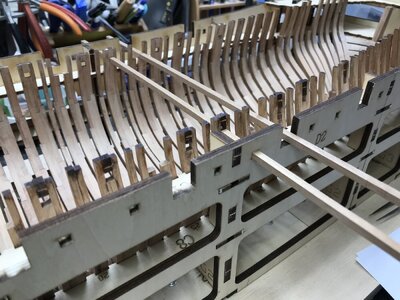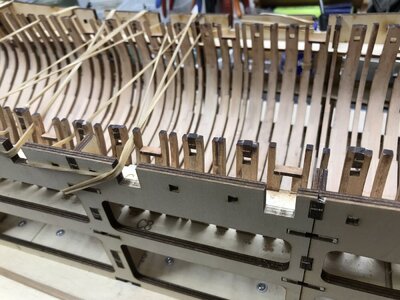Hallo Paul,
you remember correctly, that in the past I killed the drills very often and used usually the hand drill.
On the frames of this model I tried once more a lighter Proxxon drill with a 0,5mm drill and it worked. Ok - all holes were drilled vertically down, so no real challenge.
I was happy about this, due to the fact, that I have 52 bolts per frame, with each side 26 - all together appr. 2.000 nails (and holes) on single, double, triple frames
So to answer your question also complete
the bolts are no going trough, I am pretty sure, that this would not work correctly, minimum the pattern on the side were the drill would come out, would be not accurate enough.
View attachment 308197
Taking a look at the frame in the photo:
The red lines are marking the butt joints of the individual parts of the frame, like floor timber, futtocks and top timber. (a bolt would be never installed through a butt joint)
So I marked on one side of the frame the more or less correct bolting pattern like on a real ship frame (shown in books of Lavery, Goodwin etc.)
I drill ed on this side the holes, installed the nails and sanded them down.
Having the location of the bolt, I transfered (by eye) the location rectangle to the outside of the frame (green arrows are showing the points and made a small mark with a pencil
Than I turned the frame 180° and by eye I marked appr. the location of the bolts (blue dashed arrows)
with this I have appr. the same location and definitely the same number of bolts
When the model is finished you will be never able to see both sides of the same frame, so it is not important looking at one frame, but if you look later at the hull alongside you will see the sides of the frames.
So it is important to make the bolts on all the frames with the same pattern
I tried to show this here, where I marked the bolts (visible in the photo) with different colours - if the pattern would be irregular it would be easily visible.
View attachment 308209
btw: the single frames have no bolts at the sides of the frames, only the chocks are bolted with 6 bolts per chock
It is not a must to do it like I did it - it was at the time I made the bolts important for me personally - at the end I will know, if this additional work was really necessary
f.e. you can see that I made also bolts at the floor timbers - these will be never visible later on -> but I (and you also) know, that they are there
Many Thanks for your kind interest






